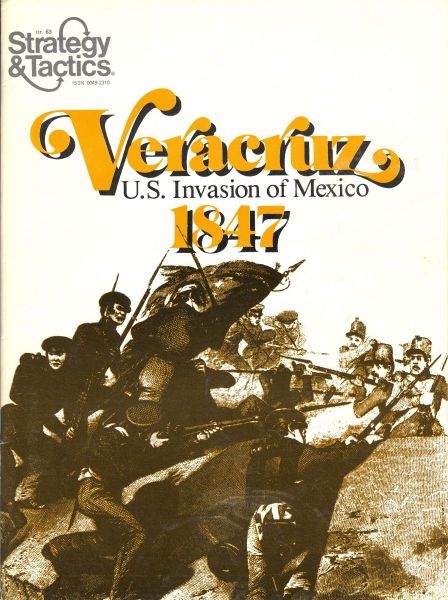Veracruz: U.S. Invasion of Mexico 1847 (1977) Board Game
Veracruz: U.S. Invasion of Mexico 1847 is a wargame that simulates the historical events of the U.S. invasion of Mexico in in 1977. This conflict, known as the Mexican-American War, was a pivotal moment in the history of both countries and had far-reaching consequences. The game allows players to take on the roles of military commanders and strategize their way through this significant chapter in history.
Game Components of Veracruz: U.S. Invasion of Mexico 1847
How To Setup Veracruz: U.S. Invasion of Mexico 1847
To set up the game, players first place the game board, which depicts the region from Veracruz to Mexico City. The American player sets up their invasion force at Veracruz, while the Mexican player deploys their forces defensively. Each player receives the appropriate counters and tokens, including leaders, units, and supply markers. The game includes a single scenario that covers the entire 25-week invasion campaign from March to November 1847.
Gameplay Mechanics and Game Objective
Player Experience
Playing **Veracruz: U.S. Invasion of Mexico 1847** offers a historical and strategic experience. Players must manage supplies, morale, and disease, all while navigating the challenges of the Mexican–American War. The game forces the American player to follow historical strategies, such as avoiding long supply lines, to succeed. However, some reviewers have noted that the game can feel unbalanced in favor of the American player, with limited replay value.
Pros
Cons
Personal Thoughts on Veracruz: U.S. Invasion of Mexico 1847
**Veracruz: U.S. Invasion of Mexico 1847** is ideal for wargame enthusiasts and history buffs interested in the Mexican–American War. While it offers a rich and historically accurate experience, it may not appeal to players seeking high replayability or a balanced game. For those looking to understand the strategic and logistical challenges of this period, this game is an excellent choice. However, new players or those preferring more dynamic gameplay might find it less engaging.
We are supported by our audience. When you purchase through links on our site, we may earn an affiliate commission, at no extra cost for you. Learn more.

